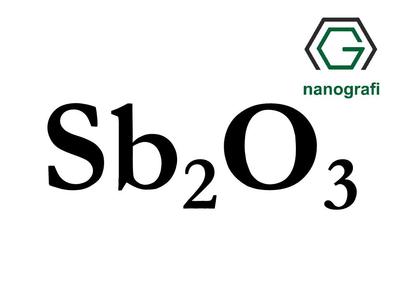Antimony Trioxide Nanoparticles/Nanopowder and Applications of Antimony Trioxide Nanopowders/Nanoparticle
Antimony Trioxide Nanoparticles/Nanopowder and Applications of Antimony Trioxide Nanopowders/Nanoparticle
Information about Antimony Trioxide

Antimony Trioxide which is the most important commercial compound of Antimony is the inorganic compound with the formula Sb2O3. Antimony Trioxide is an odorless white solid.
Applications and Usage Areas of Antimony Trioxide
Like many nanoparticles/nanopowder, Antimony Trioxide shows unique electrochromic and electro-optical properties at such small sizes. . Antimony Trioxide nanoparticles/nanopowder are particularly conductive and by this property Antimony Trioxide nanoparticles/nanopowder viable for various applications demanding high conductivity materials. Antimony Trioxide nanoparticles/nanopowder show very good electrical properties. Hence Antimony Trioxide nanoparticles/nanopowder can be utilized as an anti-static additive. . Antimony Trioxide is notably flame retardant and they are used in plastics, fibers, textiles, and specialty coatings.
Technical Properties of Our Sb2O3 (Antimony Trioxide) Nanoparticles/Nanopowder, 75-210nm, Purity 99.97% Product
| Purity % | 99.97 |
| Color | white |
| AVERAGE PARTICLE SIZE (nm): | 75-210 |
| SPECIFIC SURFACE AREA (m2/g): | >10 |
| Molecular Weight (g/mol) | 291.52 |
| Melting Point (°C) | 660 |
| Bulk Density (g/cm3) | 0,6 |
| True Density (g/cm3) | 5,8 |
| Crystal Structure | orthorhombic |
You may order Sb2O3 (Antimony Trioxide) Nanoparticles/Nanopowder, 75-210nm, Purity 99.97% from the link given below:
Comments
Post a Comment